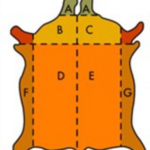Instead of spending a fortune on new furniture as old furniture becomes dated, or worn, consider reupholstering. Reupholstering is a convenient and affordable way to revamp your room adding style and personality. To save money, consider reupholstering your furniture yourself.
To begin, you will need to pick an upholstery fabric. Although it’s tempting to grab any old fabric, upholstery fabric is more durable and often stain resistant. Keep in mind while making your selection that thicker fabric is more durable, however more difficult to work with. If you have never reupholstered before, stay away from reupholstering suede or leather on your first try. These fabrics should be done professionally, or after much practice.
Look online or in your phone book for a reupholstery store. These are becoming more popular, and have informed sales representatives to offer suggestions and help. They also carry a variety of different fabrics, colors, and textures at low prices. You can also check your local sewing shop or outlet stores for great bargains.
Be sure you measure your furniture before purchasing your fabric so you know that you will have enough. Fabrics are often on back order or stop being made altogether so be sure that you will have enough to finish your project. Measure all surface area, including cushions, and allow some wiggle room for mistakes.
To begin you will need the follow:
-a pair of needle nose pliers
-glue gun
-a staple gun or upholstery tacks
-sharp scissors
-welting, which is cloth used as trim along the edges of the furniture
-cotton batting
If this is your first time – I suggest getting a friend to help you. Pulling the fabric and working with staples and glue can be frustrating for beginners.
REUPHOLSTERING A CHAIR CUSHION
This is probably the simplest job a beginner can start with. Unscrew the seat cushion from the seat frame and remove all the staples, tacks, or glue. If the cotton batting is worn down, remove that also.
Most chair cushions are actually a piece of wood cut to fit the chair. Take this wooden piece and set it atop the fabric you have picked out. Cut around the seat leaving several inches of fabric.
If you removed the old batting, replace it with fresh cotton batting to the comfort level that you desire. Set the seat on top of the batting and pull it tightly against the seat. Staple it tightly and trim off any excess.
Now, lay the seat with the batting facing down over the new fabric. Pull the fabric tight. If the fabric has designs make sure that they lay properly and staple the material tightly to the base of the seat. If you have any extra fabric, simply trim it away. Screw the seat back into place on top of your chair.
REUPHOLSTERING AN ARM CHAIR
Armchairs are a bit more difficult, especially if they are upholstered on the back portion and the seat is not removable. To begin with, remove all existing fabric. Make sure all the staples, tacks and glue are gone. If the batting is worn out, remove it. Try to remove as much fabric as possible without ripping it. Unlike the chair cushion, which you could use as a guide, you will have to use the old fabric as a template.
Place the old fabric over your new fabric and cut around it. Make sure you leave two or three inches so you can bind it to your chair.
Put new batting on the naked areas and staple it smoothly in place.
To reupholster the back of the chair, place the new fabric in place and pull the excess material through the sides of the chair towards the back. Staple the material into place and pull it gently so it is tight. Be sure that your design pattern is how you want it. Pulling the fabric gently on the top and bottom, staple them into place.
To reupholster the seat, drape the fabric over the seat and pull it through to the bottom. Pull the fabric taut on all sides, be sure your pattern is how you would like it, and staple it into place.
If your chair has fabric on the arms, drape the cloth where you would like it to go. Folding a third of the fabric forward (the part near the back of the chair), pull the fabric taut on the sides. Again, ensure your pattern is in place and staple it to the chair frame. Make a slit along the center of the fold you pulled forward. This center cut will allow you to pull the fabric around the arms of the chair. Once it is in place staple. If you like the look of welting, place the welting wherever you would like and glue for a fluid look.
SOFAS AND LOVESEATS
Reupholstering sofas and love seats are a more challenging task. I suggest if you’ve never reupholstered anything that you consult a professional, take a class, or enlist the help of a knowledgeable friend to help you. Take accurate measurements as these projects often use more fabric that you’ve planned for.
To begin, start with the cushions. A lot of sofa cushions can actually be unzipped and laundered. When reupholstering, you can use these encasements as templates. Disassemble them and either place them on top of your new fabric, or use their measurements. You will have to sew the pleats into place to fit snuggle around the cushions. Sew in a zipper on one size so you can slip them on and off your cushions for laundering and cleaning.
Similar to how you removed fabric off of an armchair, you will follow the same procedures when reupholstering a couch or loveseat. Pull the fabric off gently and take care not to rip it, as you will use this as a pattern. Make little notes about where each piece of fabric came from so you aren’t confused later. If there is cotton batting worn down, take it off and replace it stapling fresh batting carefully in place.
Lay the old fabric on top of your new fabric and cut out pieces that are slightly larger to allow for mistakes and staples. With the help of a friend, place the new fabric in the place you pulled the old fabric from. This job is nearly impossible to do alone because you will need to pull the fabric taut. If you are using material with designs, be sure that your fabric is lying how you like it before you begin stapling in place.
Edges of furniture, especially scrolled armrests can offer a bit of frustration because you will need to pleat the fabric. Make sure you pay attention to how the fabric is laid when you are disassembling your old fabric. This will help you figure out how to reassemble it when it comes time to making pleats.
Reupholstering can be a fun hobby, a way to brighten and change the look and feel of your rooms, and a cheap fix for old or stained furniture. With a little time and patience, it’s easy to learn and will save you bundles of money.






